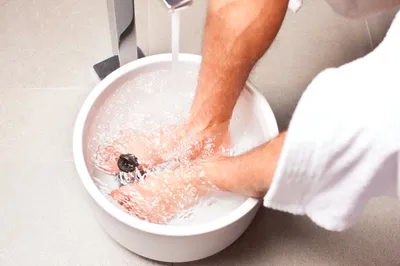1. What is Frostbite?
It’s no joke when Jack Frost is nipping at your fingers, nose, ears, and toes so severely that it causes frost bite.
Frostbite occurs when skin tissues, typically the extremities, are exposed to cold temperatures over long periods and literally freeze. Frost bite occurs in super cold conditions when the body constricts blood vessels to the arms and legs in order to send more blood towards the vital organs in order to keep you alive.
If your skin looks white or grayish-yellow, is very cold and has a hard or waxy feel, you may have frostbite. Your skin may also itch, burn or feel numb. Severe or deep frostbite can cause blistering and hardening. As the area thaws, the flesh becomes red and painful.
2. Frost Nip vs. Frostbite
Although frost nip can signal the beginning of more severe frostbite, frost nip occurs as white patches of skin form and become numb—usually on the fingers, toes, nose, and ears. Frost bite occurs as the exterior skin and first layers of superficial tissues actually freeze.
3. The Common Symptoms of Frostbite Include…
- Skin that turns from white to dark gray.
- Hardening and waxy texture on the exterior layers of skin.
- The development of dark gray or black blisters.

4. Other Symptoms of Frostbite May Include…
- Inflammation or swelling of the fingers, toes, nose, or tips of ears.
- A nagging itch or burning sensation that causes sharp pain when you try to warm the affected area.

5. To Prevent Frostbite…
- Protect your skin from the elements with thick gloves, hat, earmuffs, warm socks, and water proof boots.
- Remove any wet clothing as soon as possible and gradually warm the wet, cold areas affected.

6. If you become exposed to cold weather for long periods of time…
- Protect your face and nose with a warm, dry scarf or gloved hands.
- Protect frostbitten hands by shielding or tucking them up into your armpits.
- If toes or feet are frostbitten refrain from walking or more damage may occur.

7. Treat Frostbite follow these steps…
- First, dry the frost bitten areas completely.
- Very slowly warm the frostbitten areas by immersing them in warm water between 104 and 107.6-degrees Fahrenheit (above 40 –degrees Celsius).
- Never use direct heat (i.e., fireplace or heating pad) to avoid burning tender skin.
- Then completely wrap up the affected area in a warm, dry blanket.

8. When to Seek Emergency Help for Frostbite…
- Emergency medical help will be required to treat frostbite if lingering pain or numbness remains present.
- If skin doesn’t return to normal color.
- If blisters worsen or develop after you have warmed the affected area.






